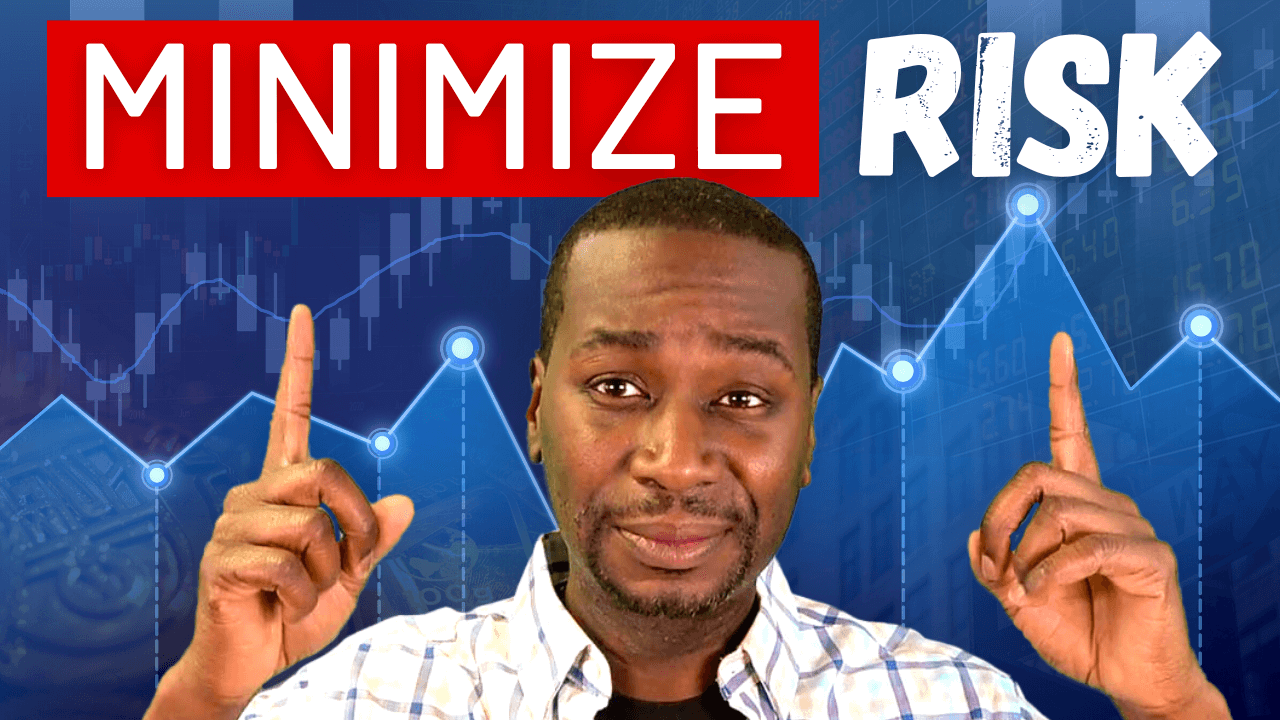Minimizing Our Losses
When I first started investing in the market, I took $2,000 to a well-known bank and opened up a mutual fund account with them.
At that time, I wasn't sure how I could invest in the market without losing money. Like many people, I thought going to a professional was the best way because they couldn't possibly lose money.
Two years later, my $2000 was now $700.
The bank lost $1300 of my money. I also lost the time I waited expecting my money to grow. In two years, I thought I'd come back to more money in my account.
The lesson that stuck with me the most was that I didn't learn anything. I didn't know what they invested in or why. It was that moment I realized I was focused on the wrong thing.
Audio Version:
You can also listen on Spotify, ApplePodcasts and Stitcher
Video Version:
Identifying Key Chart Indicators
I started studying the probability and statistics of the stock market. In doing so, I realized there are patterns in the market and levels called support and resistance.
The "support" level of a stock is when it is oversold, so people are buying at this level because the price is low.
The "resistance" level of a stock is when it is overbought. People will start to take profit, or sell, when a stock is at resistance because the price is high.
Once I identified these levels, I knew when people liked to buy the stock and when they liked to sell it. If I waited for these levels, I had a greater probability to make some profit.
Learning How To Read Stock Charts
Imagine you have $1000 in the market and you want to make $2000. You buy some stock, and things are looking good. Then that stock turns around and you start losing money.
I've been there. I realized if the stock is at it's resistance level, it is not going to go any higher. It didn't matter that I wanted to make $2000... the stock was only capable of making me so much.
You want to think about how you can increase the probability of being right. You can do that by learning how to read a stock chart. Being able to determine the best time to buy and sell will help increase your chances of being right.
Knowing how to read charts helped lower my risk because I can better predict the best times to buy and sell based on the chart.
What If The Stock Goes Against Me?
So many people, whether they are new to the market or a veteran trader, think they are just going to buy a stock and make money. They never stop to think what they would do if it goes against them.
I can help minimize the loss by developing my "I'm wrong" level. We can read and study the charts but we should always have a back up plan in case it turns around. Your "I'm wrong" level should identify a price point in which you need to get out of the trade if the stock falls below that price.
This gives me control over my own account. I can set the amount I'm okay with losing whether is is 10% or 15%, and not lose 50% or more and "wait it out" to make my money back.
Working With Your "I'm Wrong" Level
One of the things we teach inside of Power Trades University is if the stock isn't going up, it's going down. If the stock is going the opposite way we want, we don't sit there and hope it's going to change.
When this happens, we can bring in strategies like put options to protect our account or to make money from the stock falling. Once we understand the basics, like reading the chart and setting an "I'm wrong" level, we can look at learning new strategies.
By learning different strategies I can increase my chances to be right in my trades.
We don't have to sit on the sidelines and wait for the market to go higher to make money when we can utilize put options. We want to have alternate routes to get to our profit destination.
How can you put yourself in a position where the probability is in your favor?
Don't just sit there on the sidelines doing this by yourself. Learn more about setting an "I'm wrong" level and some strategies to use in your trading at Power Trades University.
What Is Your Next Move?
I learned my lesson years ago about letting someone else invest for me. At the time, it was a very expensive lesson, one I hoped to not repeat.
Not every trade is going to be a home run. I'm okay with that. I took the time to learn for myself so if my trade doesn't pan out, I know what not to do for next time. I didn't have that with my money in an account someone else was controlling.
You too can take control of your investments. I believe with the right education you can learn to read the charts and help predict better trades. You too can set your "I'm wrong" level and know when to get out of trades. You too can learn alternate routes and strategies to make money.
Consider what those lessons can teach you and how they can change your financial future.
